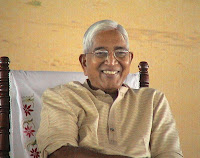
Gaya Art Cafe supports the arts and we encourage you to post your poetry, songs and thoughts on our weblog.
 Carlos Castaneda's Teachings
Carlos Castaneda's TeachingsNothing in the world is a gift. Whatever there is to learn has to be learned the hard way.
— Carlos Castaneda
— Carlos Castaneda
Anything is one of a million paths. Does this path have a heart? This question is one that only a very old man asks. All paths are the same: they lead nowhere. They are paths going through the bush, or into the bush. Does this path have a heart?
If it does, the path is good; if it doesn't, it is of no use.
Both paths lead nowhere; but one has a heart, the other doesn't. One makes for a joyful journey; as long as you follow it, you are one with it. The other will make you curse your life.
One makes you strong; the other weakens you.
One makes you strong; the other weakens you.
There's no emptiness in the life of a man of knowledge, everything is filled to the brim and everything is equal. For me there is no victory, or defeat, or emptiness. Everything is filled to the brim and everything is equal and my struggle is worth my while.
What makes us unhappy is to want. Yet if we would learn to cut our wants to nothing, the smallest thing we'd get would be a true gift. To be poor or wanting is only a thought; and so is to hate, or to be hungry, or to be in pain.
The countless paths one traverses in one's life are all equal. Oppressors and oppressed meet at the end, and the only thing that prevails is that life was altogether too short for both.
Chance, good luck, personal power, or whatever you may call it, is a peculiar state of affairs. It is like a very small stick that comes out in front of us and invites us to pluck it.
Usually we are too busy, or too preoccupied, or just too stupid and lazy to realize that that is our cubic centimeter of luck. A warrior, on the other hand, is always alert and tight and has the spring, the gumption necessary to grab it.
Usually we are too busy, or too preoccupied, or just too stupid and lazy to realize that that is our cubic centimeter of luck. A warrior, on the other hand, is always alert and tight and has the spring, the gumption necessary to grab it.
Any thought that one holds in mind in a state of silence is properly a command, since there are no other thoughts to compete with it.
Only as a warrior can one withstand the path of knowledge. A warrior cannot complain about, or regret, anything. His life is an endless challenge, and challenges cannot possibly be good or bad. Challenges are simply challenges.
Fine dining whenever you want to eat out in Senegambia.
A unique Gambia restaurant for both Gambian and global cuisine.
Come and enjoy our restaurant in The Gambia!
Directions Bertil Harding Highway, next to Senegambia Craft Market
220 4464022
220 6664022
gaya@qanet.gm
gayagambia@gmail.com
www.gayaartcafe.com/
Fine dining whenever you want to eat out in Senegambia.
A unique Gambia restaurant for both Gambian and global cuisine.
Come and enjoy our restaurant in The Gambia!
Directions Bertil Harding Highway, next to Senegambia Craft Market
220 4464022
220 6664022
gaya@qanet.gm
gayagambia@gmail.com
www.gayaartcafe.com/
















































